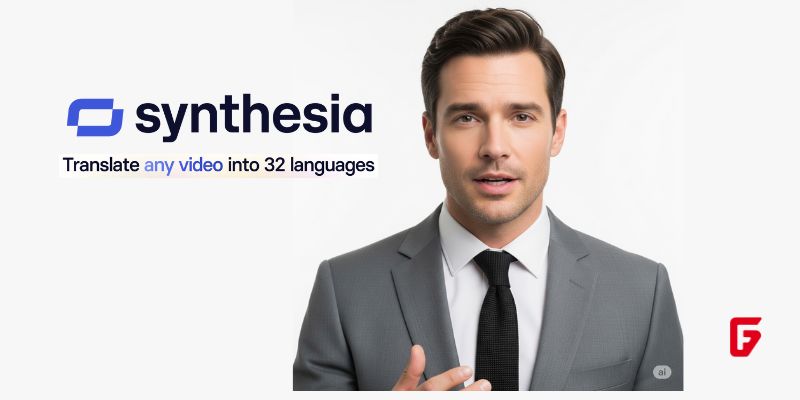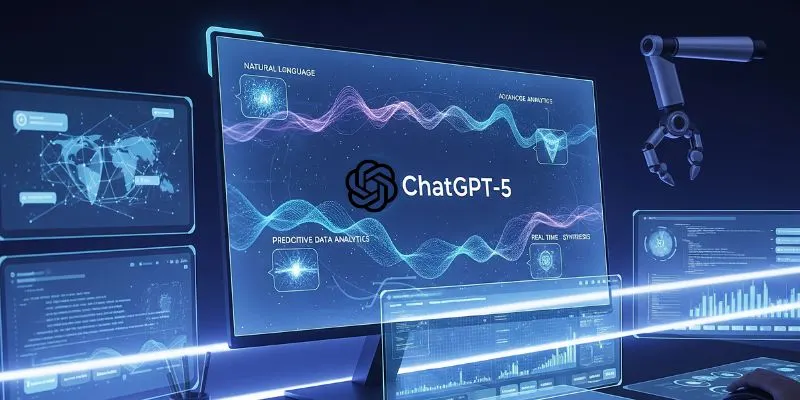Introducing the Future of Video Localization: Synthesia’s AI Dubbing for Business
By futureTEKnow | Editorial Team

By futureTEKnow | Editorial Team

In today’s globalized business environment, video content is king—used everywhere from employee training to product updates and customer support. Yet, a staggering 80% of the world’s population struggles with English, the dominant language for most business videos. This language barrier limits engagement and can even create costly misunderstandings. Enter Synthesia’s groundbreaking AI dubbing technology, designed specifically to break down these barriers and transform how companies localize videos.
Video dubbing isn’t new, but until now it has been a slow, expensive, and complex process reserved for blockbuster films and premium ad campaigns. Companies faced a tough trade-off: Either invest excessive time and money to produce quality dubbing or settle for subtitles, which are often ineffective because viewers can’t comfortably watch visuals and read text simultaneously. For crucial content like compliance training or safety instructions, partial understanding is simply not an option.
Synthesia’s AI dubbing takes localization to the next level by allowing businesses to:
Dub any video into over 30 languages within minutes.
Maintain perfect lip sync with the translated voiceover, making the viewing experience seamless and natural.
Retain the original tone and delivery style of the speaker, preserving authenticity.
Securely edit translations, so meaning is never lost or distorted, thanks to a proprietary system that validates accurate translation.
This means you no longer need to re-record videos or hire expensive voice actors for every language. Upload a video, select target languages, and let AI handle the rest — delivering fast, affordable, and reliable results.
One remarkable feature that sets Synthesia apart is secure editing. It prevents unintended changes in your message’s meaning. For example, if you try to modify a phrase such that it alters the original intent, the system flags it for revision. This layer of quality control is crucial, especially for high-stakes business communication, where an incorrect translation can lead to misinformation and risk.
Beyond dubbing, Synthesia’s platform includes a multilingual video player that hosts all language versions under a single link. This streamlines content management and ensures viewers automatically receive videos in their preferred language, further enhancing engagement without the hassle of multiple links or file versions.
Synthesia reports that their AI dubbing delivers content:
10 times faster than traditional workflows.
15 times cheaper than human voiceover recordings.
Twice as engaging compared to subtitles alone.
For any company looking to expand or support a global market, this represents a massive leap in accessibility and scalability.
Looking forward, Synthesia plans to enhance the platform by enabling localization for specific regional dialects and industry terms through customizable glossaries. They also aim to empower users to add creative elements—like captions and highlights—directly to imported videos, making localization not just about voice but the entire visual experience.
Synthesia’s AI dubbing technology is redefining how businesses communicate globally by making videos truly speak the audience’s language. This innovation offers an accessible, cost-effective pathway for organizations to leverage their video content’s full potential across borders and cultures.

SpaceX aims to nearly double launches from Vandenberg in 2025, facing support from federal agencies but strong objections from the state and local communities.

Traditional Medicare will pilot AI-assisted prior authorization in 2026 across six states, focusing on high-risk outpatient services. Clinicians retain final say, but incentives and access concerns loom as CMS tests fraud reduction and “gold card” exemptions. Here’s what providers and patients should know.

OpenArt’s new “one-click story” compresses scripting, visuals, and edits into ready-to-post short videos—fueling viral growth and a fresh IP debate. We break down how it works, adoption signals, what’s next (multi-character, mobile), and practical guardrails creators and brands should follow to stay original and compliant.

OpenAI’s o3 swept the Kaggle AI chess tournament, defeating xAI’s Grok 4–0. The victory fueled the intense rivalry between Altman and Musk, reshaping AI benchmarks.

NASA and Google’s AI-powered Crew Medical Officer Digital Assistant enables autonomous diagnoses for astronauts on Mars missions, redefining remote healthcare for space and Earth.

Pinterest’s CEO confirms that fully agentic AI shopping is years away, as the platform invests in AI-powered tools to enhance discovery, inspiration, and personalized shopping experiences for millions.

Shopify’s new AI shopping tools are transforming e-commerce, letting agents and chatbots deliver smooth, personalized shopping and checkout experiences across platforms. Learn how these innovations reshape online retail.

Meta has acquired WaveForms AI, a startup pioneering emotion-detecting voice technology. Learn what this means for Meta’s AI voice ambitions and the future of AI audio.

Tracelight is revolutionizing financial modelling for finance professionals with AI-powered Excel tools that automate complex tasks, reduce errors, and unlock new analysis capabilities. Learn how this next-gen solution changes the future of spreadsheets.

China’s Lanyue lander completed its first major test, showcasing advanced engineering for safe, crewed moon landings before 2030. Explore how this milestone shapes the space race.

Microsoft rolls out GPT-5 across its Copilot suite, integrating smarter AI for enterprise and personal users. Discover new features, free access, and what sets this launch apart.

OpenAI’s GPT-5 is now live for all ChatGPT users. It brings faster, smarter AI with improved reasoning, expanded context, and safer outputs—marking a major leap in generative technology.
To provide the best experiences, we use technologies like cookies to store and/or access device information. Consenting to these technologies will allow us to process data such as browsing behavior or unique IDs on this site. Thanks for visiting futureTEKnow.